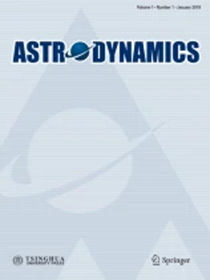Astrometric calibration and source characterisation of the latest generation neuromorphic event-based cameras for space imaging
Abstract
As an emerging approach to space situational awareness and space imaging, the practical use of an event-based camera (EBC) in space imaging for precise source analysis is still in its infancy. The nature of event-based space imaging and data collection needs to be further explored to develop more effective event-based space imaging systems and advance the capabilities of event-based tracking systems with improved target measurement models. Moreover, for event measurements to be meaningful, a framework must be investigated for EBC calibration to project events from pixel array coordinates in the image plane to coordinates in a target resident space object’s reference frame. In this paper, the traditional techniques of conventional astronomy are reconsidered to properly utilise the EBC for space imaging and space situational awareness. This paper presents the techniques and systems used for calibrating an EBC for reliable and accurate measurement acquisition. These techniques are vital in building event-based space imaging systems capable of real-world space situational awareness tasks. By calibrating sources detected using the EBC, the spatiotemporal characteristics of detected sources or “event sources” can be related to the photometric characteristics of the underlying astrophysical objects. Finally, these characteristics are analysed to establish a foundation for principled processing and observing techniques which appropriately exploit the capabilities of the EBC.

 求助内容:
求助内容: 应助结果提醒方式:
应助结果提醒方式:


